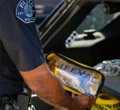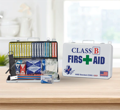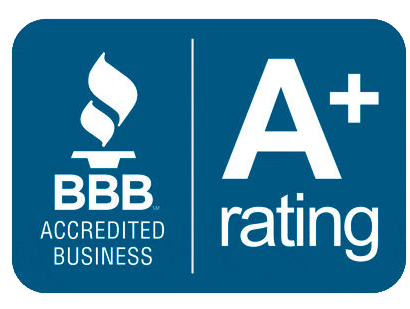Why Law Enforcement Should Have AEDs?
When someone experiences Sudden Cardiac Arrest (SCA), the initial action most people take is to call 911. For every minute that goes by without CPR and defibrillation, the chance of survival drops by 10 percent. With EMS response times averaging over 10 minutes sometimes law enforcement are the first ones to arrive. Having Automated External Defibrillators (AEDs) in squad cars can make the difference in saving a life by delivering a shock as soon as possible before EMS arrives.

AEDs in Squad Cars
Law enforcement vehicles do not respond from a centralized location the way fire and EMS does. This allows them to have quicker response times to the scene of an emergency. Law enforcement officers are able to begin the resuscitation process faster by having AEDs in their squad cars. AEDs are rugged, lightweight, and compact devices that take up minimal space in vehicles. These devices are also designed to be user-friendly and with clear instructions.
What Key Features of AEDs Should Law Enforcement Look For?
- CPR Feedback - CPR plays a pivotal role in the resuscitation process when using an AED. AEDs are typically used by lay responders lacking the formal training in AED operation and delivering high quality CPR. This is where CPR feedback comes in. CPR feedback is a feature in some AEDs that provides real-time analysis of the compressions delivered and gives feedback on changes needed to adhere with AHA Guidelines.
- Pediatric and Universal Electrode Pads - The availability of pediatric and universal electrode pads is a critical feature for law enforcement. Law enforcement often finds themselves responding to calls involving individuals of different ages and sizes. Having pediatric pads or uni pads ensures that officers can effectively administer lifesaving treatment to pediatric patients without delay or hesitation.
- Size and Durability - Law enforcement operates in diverse and often unpredictable environments, where equipment must be compact and rugged to withstand rigorous use and various weather conditions. A compact size ensures ease of portability allowing officers to store it in their patrol vehicles without impeding their work.
What are the Best AEDs for Law Enforcement?
- Philips HeartStart FRx - Exceptionally fit for law enforcement because of its reliability and versatility. With its compact size and long battery life, the Philips FRx AED is a valuable addition to squad cars that provides immediate response to cardiac emergencies.
- Includes features to help guide the treatment of SCA with easy setup, audible metronome and clear, step-by-step voice commands paced to your action
- Provides CPR instructions for infants and children under 25 kg (55 lb) or 0-8 years old and adults and children over 25 kg (55 lb) or greater than 8 years old
- Has an optional infant and child key; simply insert it and the defibrillator adjusts instruction and therapy, eliminating the need for additional infant and child pads
- Includes pre-connected SMART Pads II that can be used for both adults and children; SMART Analysis automatically assesses heart rhythm and only delivers a shock if the victim’s rhythm is determined to be treatable by the Philips advanced algorithm even if the Shock button is pressed
- HeartSine Samaritan PAD 350p/360p - The HeartSine Samaritan PAD 350p/360p AED is an excellent fit for law enforcement agencies. Tailored for ease of use, it offers clear instructions through voice prompts and visual cues, ensuring seamless guidance for law enforcement personnel in high-pressure situations.
- Real-time CPR Rate Advisor Voice prompts, with visual indicators, tell the user to “Push faster,” “Push slower,” or “Good speed”
- Fully-automatic or Semi-Automatic
- Highest IP rating over other units at 56
- Low cost of ownership By combining battery and electrodes, the Pad-Pak may offer savings over the life of the AED.
- Zoll AED Plus - An excellent choice for law enforcement due to its robust and user-friendly design. It features real-time CPR feedback from the CPR-D Pads, which is a particularly valuable feature for helping officers who may not have extensive medical training. Other key features include:
- Real CPR Help provides real-time feedback for depth and rate of chest compressions during CPR
- Supports the entire Chain of Survival, with easy-to-understand audio prompts and illustrations
- Has lowest total cost of ownership, once installed, because CPR-D-padz and batteries last five years, if not used
- Rugged design that resists dust and direct water spray (IP55 rating)
- Powered by 10 lithium batteries
- Physio-Control CR2 - The Physio-Control LIFEPAK CR2 is an ideal choice for law enforcement settings, offering universal pads for both adult and pediatric victims and CPR coaching tailored for untrained responders.
- Toggle between two pre-set languages when using the device.
- Child mode delivers lower energy levels appropriate for young children without having to change electrodes.
- Detects background noise and adjusts tones and voice prompts to ensure they can be heard clearly in noisy environments.
- Metronome and CPR coaching sets an effective pace and audibly guides users.
Other Emergency Preparedness Essentials For Law Enforcement

- LifeVac Rescue Suction Device - Law enforcement should carry the LifeVac Rescue Suction Device as it provides a non-invasive and potentially life-saving solution for choking emergencies. Its effectiveness in clearing airway obstructions can offer crucial assistance in situations where traditional methods might not be sufficient.

- Bleeding Control Kits - Law enforcement can experience many kinds of injuries in their line of work. For traumatic bleeding emergencies where a tourniquet can not be used, such as injuries to the armpits, shoulders, or chest, it is important to have a bleeding control kit with the necessary tools to control life threatening bleeding.

- First Aid Kits - Equipping law enforcement with first aid kits ensures they are prepared to provide crucial medical assistance during accidents, incidents, or encounters.

- SAM XT Tourniquets - Tourniquets are an essential tool for law enforcement due to their ability to provide immediate control over severe bleeding, potentially saving lives. Equipping law enforcement with tourniquets ensures they are prepared to address life threatening injuries effectively during incidents or accidents.












